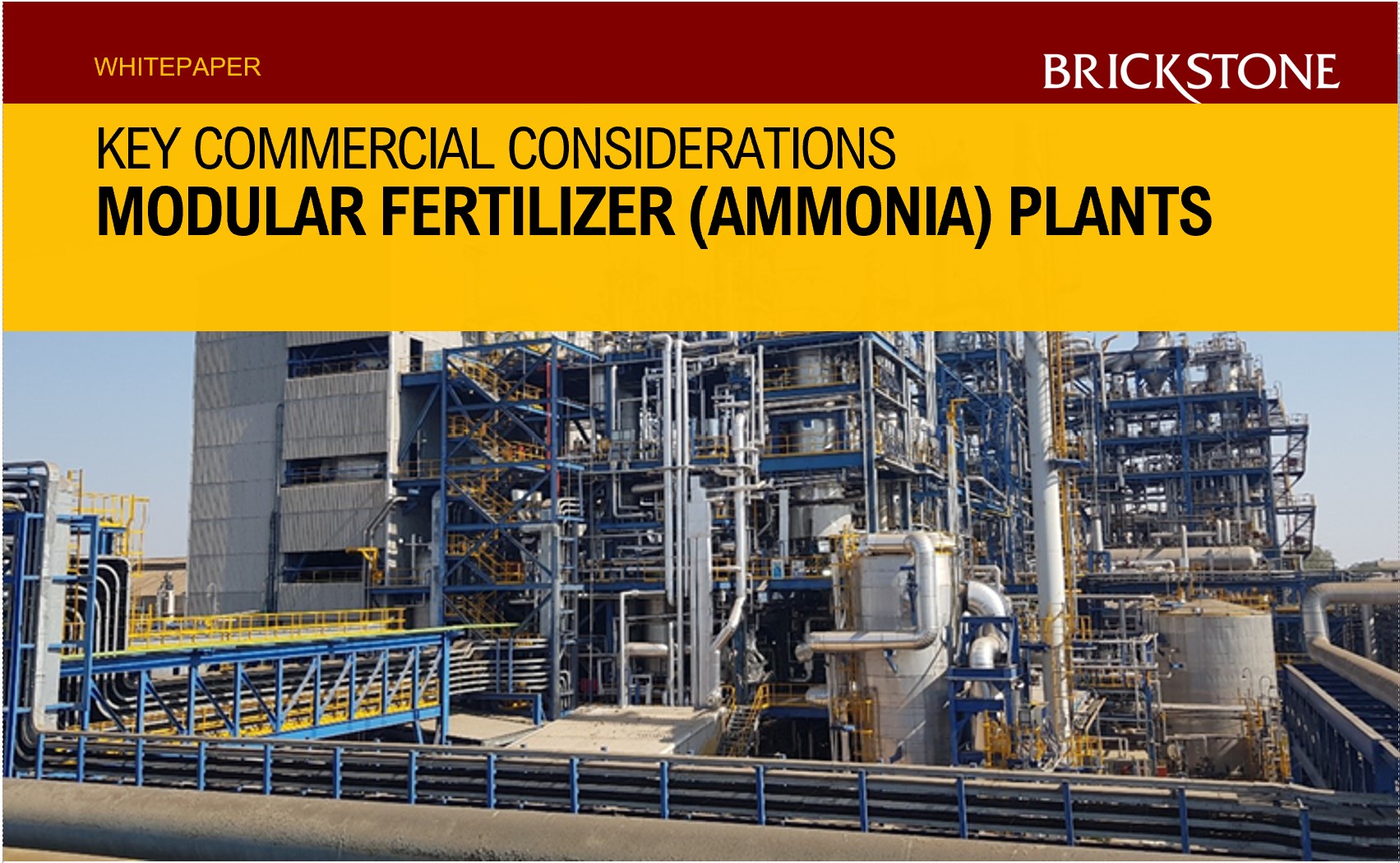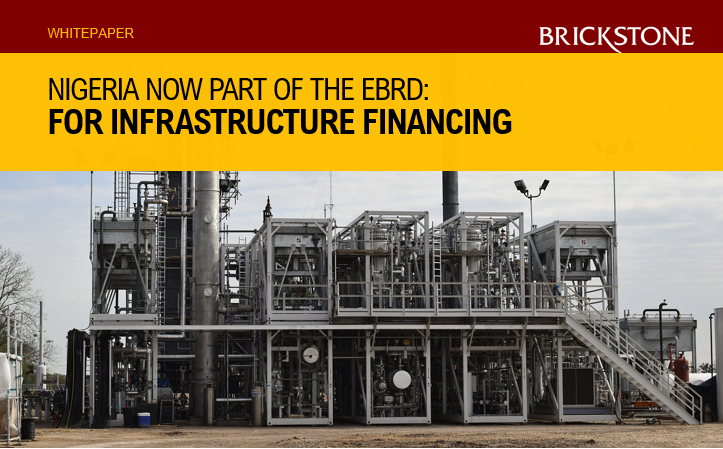Developing Modular Fertilizer (Ammonia) Plants
Modular Fertilizer (Ammonia) Plants
Modular Fertilizer (Ammonia) Plants are technologies created by innovative companies to encourage local production of fertilizers, especially since the larger plants are much more expensive and complex to maintain.
Fertilizers, if at a good price and appropriate suitability for Nigerian soil would be a profitable business for any Investor. Nitrogen, Phosphate, and Potassium are the important compositions of the most commonly used Fertilizer in Nigeria, and are abundant in Nigeria. However, research shows that many Nigerian lands are barren because they are deficient in these components, and a great way to increase production is to apply natural or artificial fertilizers on the land.
This White Paper has been created by the expert team at Brickstone Africa to demystify the complexities of Modular Fertilizer (Ammonia) Plants, and to provide an extensive exposition into the fertilizer business.
First, this White Paper explores the potentials of the Agriculture Industry in Nigeria, and how large the prospects would be for investors if they tapped into the Fertilizer Market. Agriculture contributes from 25% – 40% to Nigeria’s Gross Domestic Product (GDP), with crop production accounting for 80% of that number. In addition, Nigeria currently has a land area of 98.3m hectares, with only about 34m hectares or 48% are under cultivation. With these statistics, this White Paper explains how profitable Agriculture is in Nigeria.
In addition, to ensure the development of Agriculture in Nigeria, especially in terms of crops production, this White Paper emphasises the need to look into the production and distribution of Fertilizer. This is because Fertilizer has always served as a nutrient to land which increases food production. In fact, it is estimated that up to 30 – 50% of crop yields is attributable to natural or synthetic commercial fertilizer.
Likewise, the raw materials used to create fertilizers which includes – ammonia gas, phosphoric acid, phosphate powder, potash, calcium carbonate, and fillers, are abundant in Nigeria. Based on these considerations, it can be agreed that the Fertilizer Market is national, expanding, and sustainable. However, 80% of the fertilizer consumed in Nigeria is imported. This shows how Nigeria as with many other sectors, is missing out on a market with bright potentials.
This White Paper further goes on to demystify the most common type of Fertilizer in Nigeria, which is the In-Organic Type Fertilizer, consisting majorly in NPK Compositions. It is important to be aware that NPK here stands for Nitrogen [N], Phosphorous [P], and Potassium [K], which are necessary elements required for every plant’s growth. NPK Fertilizers are made depending on the type of soil and crops, and the elements must be measured in this regard. This White Paper discusses in more details, the meaning and types of Fertilizers used in Nigeria.
Moving forward, this White Paper further puts in perspective the commercial viability of the Nigerian Fertilizer Market. It mentions how much of Nigeria’s lands are in reality, barren, and are in need of more Nitrogen, Phosphorus, and Potassium to be fertile. Further, because of the high prices, only one million tons of fertilizers are used per year, a number well below that of China.
This White Paper makes a case that by applying more fertilizers on Nigerian lands, it could translate into accelerated growth and higher production. This is why Fertilizer Production and Distribution should be prioritized. It must be stated that Nigeria had two big fertilizer plants – The Federal Superphosphate Fertilizer Company (FSFC) and National Fertilizer Company of Nigeria (NAFCON). But these companies failed as a result of poor management.
Currently, the fertilizer companies operational in Nigeria are privately owned. In addition to this, the importation of fertilizers is of utmost necessity in Nigeria, since the supply cannot match the demand. This seasonal availability of Fertilizers has put them at a high price, even when most of the time, these fertilizers do not suit the land. With this state of things, this White Paper emphasizes the alternatives which would mean investment in local fertilizer production companies. The state of Supply and Demand in the Fertilizer Market has been explained in further details in this White Paper.
Since NPK Fertilizers are the most suitable for Nigerian Soil, this White Paper makes an extensive simplification of them, and how they are produced. These types of Modular Fertilizer (Ammonia) Plant can be in liquid, power, or granular form, and are to a large extent, easy to produce. The major consideration to have in mind is there must be an accurate measurement of the materials while producing. As such, it is necessary to have top NPK fertilizer formulation and manufacturing methods.
This White Paper also provides some exposition into how a viable alternative to creating a large manufacturing plant is to co-locate a small-scale ammonia production facility otherwise known as a Modular Fertilizer (Ammonia) Plant with a consuming facility. This is because of the problems of transport and cost that it solves. It also makes reference to ThyssenKrupp Industrial Solutions’ technology, as well as that of Johnson Matthey, which have both created these smaller ammonia production facilities to replace the larger production facility. This White Paper further discusses the production capacity of these new smaller production facilities, and components of a typical NPK production line.
Moving forward, this White Paper makes reference to Haldor Topsoe Technology’s 9 processes of producing ammonia, and how Nigeria can employ it in their operations. In addition, it also extensively discusses the manufacturing processes of the ammonia which is made up of 7 steps including – Nitrogen Fertilizer Component; Phosphorus Fertilizer Component; Potassium Fertilizer Component; Granulating and Blending; Bagging; Quality Control; and By-products/Waste.
Finally, this White Paper explores Project Financing options for Modular Fertilizer (Ammonia) Plant, because that route of capital raising would offer various benefits to the project development team, such as risk sharing, extending debt capacity, the release of free cash flows, and maintaining a competitive advantage in a competitive market. This White Paper delves extensively into Project Finance, its mechanics, and its advantages to modular fertilizer (ammonia) plants development teams.
Regarding the foregoing, this White Paper also explains that there are three basic ways by which modular fertilization projects can be financed, including – by debt, equity, and government support. Debt can be provided by Commercial Banks, International Financial Institutions, or from the Capital Markets. Equity for its own part, can be raised from Project Sponsors. Lastly, Government Support would usually be in form of grants from community, national, regional, or specific funds. These forms of financing have been exhaustively expatiated in this White Paper.
OTHER E-BOOKS THAT MAY BE OF INTEREST
Nigeria Now Part Of The EBRD: Implications For Infrastructure Financing
Download: Accelerating Renewable Power Generation Projects
Download: Accelerating Airports Infrastructure Projects
Why not contact us to make your Project Happen
Our advisors and consultants would be able to schedule an online meeting with you to discuss your project with the overall objective of seeking ways to achieve the “bankability” and protection of the long term asset value of your project. Request a Meeting Now








